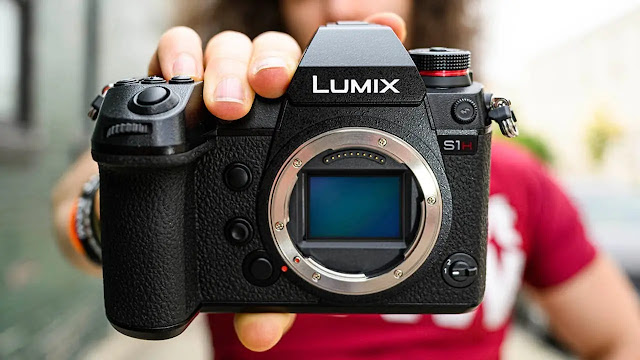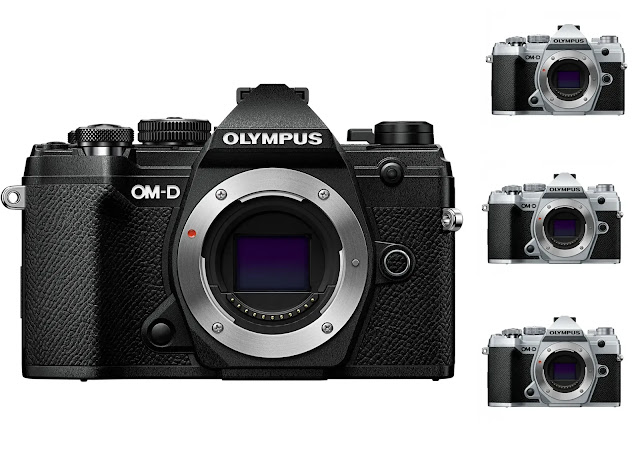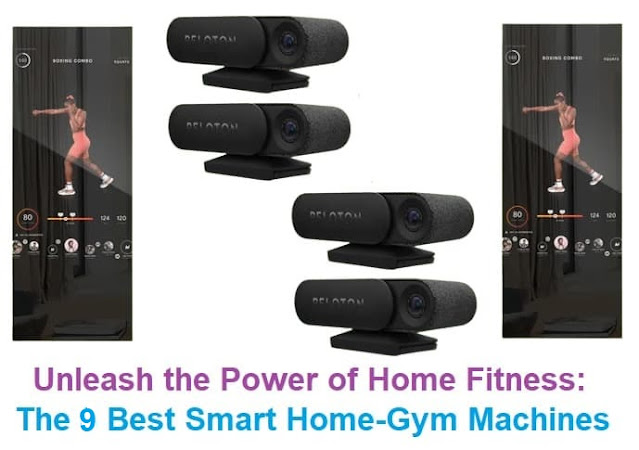The needs of the professional photographer are different from the needs of the blogger. Most bloggers can get away without a sophisticated professional camera, which is very easy. This is less valid for many video bloggers, as video quality is very important and should be watched and not neglected. This is The 10 Best Cameras for Travel Photography and vlog.
Read our review: Canon PowerShot G7 X Mark III

 Read our review: Panasonic Lumix DC-S1H
Read our review: Panasonic Lumix DC-S1H
Nikon D780 is able to bring every amazing vision to life thanks to its dexterity, elegant design, full frame and responsiveness make it all new ways to make it. Designed with a powerful 24.5MP FX sensor, ultra-powerful and intelligent AF system and next-generation EXPEED 6 image processing, which makes shooting great thanks to the full frame and 4K video, time duration, slow motion, long-distance exposure, and a wide range of creative photography tools that affect It maintains inspiration and accuracy in photography, as well as wireless photo transmission, and to meet every innovative requirement Nikon D780 is at your fingertips and ready to help.
Nikon D780 is an alternative to one of almost the most DSLRs ever, but the more exploration, the more you discover that it is a device more capable of making you a professional in photography, and features high-quality and high-quality shots, enjoy great video images in 4K UHD thanks to the wireless connection with the SnapBridge application, Made easy to use remotely.
The Nikon D780's special FX sensor is illuminated with a 24.5-megapixel rear frame and is able to collect light for extremely detailed photos and videos and stunning detail, and the new Nikon D780 is a serious upgrade in terms of image processing, video capability, speed, autofocus performance and more than That much.

Read our review: Nikon D780

The Fujifilm X-T200 could also be a quiet bridge between the company's basic mirrorless models and its more advanced cameras. Fujifilm is perhaps well known for its classically designed X Series powerful cameras, with conventional handling and exterior exposure controls. It also produces mirrorless cameras for novice photographers within the X-A range, and it's designed for first-time people and smartphone upgrades like this. The X-T200 sits right within the center between these two camera ranges, with simplified controls for novices but an electronic viewfinder a bit like the more advanced models. The X-T200 follows on from the Fujifilm X-T100, with a (much) better rear screen, faster processing, proper 4K video with a ‘digital gimbal’ feature and improved autofocus. It’s mostly better than Fujifilm might want to watch out that it doesn’t start cannibalizing sales from its more upmarket cameras. It will make the right camera for non-professional photographers and it seems the right camera for Instagram, content or vlogs. We'll be doing a general review, but the X-T200 might be in the top list, and therefore he's the strongest candidate for cameras without mirrors par excellence, and will definitely be among the simplest Fujifilm cameras on the market immediately.

Read our review: Fujifilm X-T200 First impressions
Read our review: Sony Alpha A6600 Mirrorless Camera
The Olympus OM-D E-M5 Mark III immediately brings the Micro Four Thirds format right back into contention in the enthusiast mirrorless camera market and proves once again that the Micro. The headline shooting rates of 18 frames per second (60 without AF) were astonishing when Olympus announced the E-M1 Mark II in 2016 and it's true they no longer appear quite so striking. The same can be said of the 4K video, which remains limited to 24p and the DCI aspect ratio if you want its highest quality. Then there's the viewfinder panel, which just seems outdated compared to the higher-contrast, higher resolution panels that are increasingly common. The E-M5 Mark III doesn't do enough to move the needle to recommend it to photographers not already invested in the system. It's a good camera, but one that doesn't offer the same level of imaging quality, video features, or autofocus acumen as competitors. The Sony a6400 and Fujifilm X-T30 cost less and perform better, though you will miss out on a stabilized sensor and, in the case of the X-T30, dust and splash protection
Read our review: Olympus OM-D E-M5 III


Read our review: Ricoh GR III Digital Compact Camera
The Sony Cyber-shot DSC-RX10 IV is an enthusiast long-zoom camera that improves upon its predecessor by adding a brand new image processor (the Bionz X from the a9),It has a dual autofocus system with 325 points for continuous shooting and progressive detection at 24 fps. You continue to use the CMOS sensor compatible with 20MP 1 and 24-600mm. F2.4-4 lens. Images will be composed on a brand new 3" tilting touchscreen LCD or the identical OLED electronic viewfinder found on the RX10 III. The RX captures UHD 4K video without pixel binning to insure the simplest possible quality. It has many photo and video capture tools, including S-Log2 / 3 support, with the help of Premium Gamma show, horse and cat registration, and whatever you like. High frame rate video at up to 960 fps also can be recorded. Both mic and headphone jacks are inbuilt. The Sony RX10 IV is the ultimate 1" bridge camera. It's optically stabilized 24-600mm Equiv.20MP sensor and lens combining for high image and video quality. It is the only main, primary and main camera in its model with powerful autofocus, which when connected with the maximum blast rate of up to 24 fps makes it very impressive all-in-one for sports and activities. But that's not all, its oversampled 4K video is top of the range, and also the camera offers a laundry list of video-making tools and features. In addition to the powerful touch screen, Bluetooth, and redesigned menus, they all maintain the camera quality, making them incredibly high-spec, and balanced.
Read our review: Sony Cyber-shot DSC-RX10 IV

Canon PowerShot G1 X Mark III is a high-quality camera on the market that comes nicely integrated with a 24 MP APS-C sensor and a built-in F2.8-5.6 lens of 24-72 mm. It has the dual pixel autofocus system that is available in Canon's advanced and modern DSLR camera and completely mirrorless cameras. It is smaller and much lighter than the previous version, was designed almost identical to the PowerShot G5 X design. The Dual Sensing image stabilization system reduces vibration by up to four stations, which is good for taking high-resolution images. Many features include a very clear and easy to use non-manual touch screen, the touchpad AF is very good with an OLED electronic viewfinder and enables continuous shooting at 7 frames per second with continuous autofocus, and a high-quality video capture 1080 / 60p. Recent options include connectivity in Bluetooth, Mark III Wi-Fi, and NFC. The camera is moisture-proof and dust-proof and weatherproof. The PowerShot G1 X Mark III has an original ISO range of 100-25600 that enables you to save files in RAW format, giving you more processing space.
1- Canon PowerShot G7 X Mark III
Canon PowerShot G7 X Mark III can be a premium compact camera with a 20MP 1-type superimposed CMOS sensor. The stable lens is the same as its predecessor: 24-100 mm equivalent to F1.8-2.8. The G7 X III maintains an identical 3-inch touch screen, which may flip 180 degrees up for portraits and video recording. The most prominent feature of the G7 X III is the ability to measure YouTube video streams directly from the camera. It can also capture 4K / 30p cut video and 1080 uncut video up to 120p. Amazingly the PowerShot G7 X Mark III is impressive, the G7 X III can capture lots of Raw images at great speeds of up to 30fps with locked focus with electronic shutter, or 8.3fps with continuous AF. The camera may play via USB-C port and have built-in Wi-Fi and Bluetooth. The Canon PowerShot G7 X III may be a compact, well-priced camera that offers superb image quality, a quick lens, good ergonomics, and therefore the ability to stream live video straight to YouTube. Its lens isn't super-sharp at wide-angle, video autofocus is so-so, and live streaming is difficult to induce working, but overall, it is a good value for the cash, and well worth considering.
Canon PowerShot G7 X Mark III PROS AND CONS
Canon PowerShot G7 X Mark III PROS AND CONS
1- Pros
- It features a very sharp 8x zoom lens.
- It contains an electronic viewfinder.
- It comes with 1-inch sensor design.
- Capture 20fps with accurate subject tracking.
- It can expose the eyes to pets and people.
- Features a touch screen tilt.
- 4K video can be captured with excellent external microphone port.
2- Cons
- Its price is a little expensive compared to the features.
- You cannot start the video while writing photos on the card.
- Insufficient touch functions hopefully the best
Check It Out
Amazon
2- Panasonic Lumix DC-S1H


3- Nikon D780
Nikon D780 is an alternative to one of almost the most DSLRs ever, but the more exploration, the more you discover that it is a device more capable of making you a professional in photography, and features high-quality and high-quality shots, enjoy great video images in 4K UHD thanks to the wireless connection with the SnapBridge application, Made easy to use remotely.

4- Fujifilm X-T200 First impressions

The Fujifilm X-T200 could also be a quiet bridge between the company's basic mirrorless models and its more advanced cameras. Fujifilm is perhaps well known for its classically designed X Series powerful cameras, with conventional handling and exterior exposure controls. It also produces mirrorless cameras for novice photographers within the X-A range, and it's designed for first-time people and smartphone upgrades like this. The X-T200 sits right within the center between these two camera ranges, with simplified controls for novices but an electronic viewfinder a bit like the more advanced models. The X-T200 follows on from the Fujifilm X-T100, with a (much) better rear screen, faster processing, proper 4K video with a ‘digital gimbal’ feature and improved autofocus. It’s mostly better than Fujifilm might want to watch out that it doesn’t start cannibalizing sales from its more upmarket cameras. It will make the right camera for non-professional photographers and it seems the right camera for Instagram, content or vlogs. We'll be doing a general review, but the X-T200 might be in the top list, and therefore he's the strongest candidate for cameras without mirrors par excellence, and will definitely be among the simplest Fujifilm cameras on the market immediately.

Fujifilm X-T200 First impressions PROS AND CONS
Fujifilm X-T200 First impressions PROS AND CONS
1- Pros
- Great 3.5-inch wide-angle touch screen
- Good 4K video can be recorded
- Attractive design, lighter than before
2- Cons
- Its price is a little expensive
- Simplified external controls
- Not available on X-Trans sensor
Check It Out
Amazon
5- Sony Alpha A6600 Mirrorless Camera
Sony a6600 is the best APS-C camera now without mirrors, 24 MP and 4K video recording. it's lots like Sony's other a6000-series models initially glance, but this one has the largest battery and therefore the best build quality of the bunch, whether or not the pictures it produces are broadly cherished the more cost-effective options. This is a camera aimed at vlogs. The camera features a high-performance 4K HDR capture without restrictions on a full recording, with a built-in microphone jack to give the sound purer, in addition to a built-in headphone for monitoring the sound as well. The A6600 distinguishes its most impressive performance by providing image stabilization, which is still rare among other APS-C cameras this could help with stills shooting in low light, to be sure, but also combines with excellent autofocus tracking to create it the most effective crop-sensor video shooter Sony currently sells. Despite its refinements, we still think the a6600 may gain an advantage from some ergonomic updates to create it a better camera to require control over.


Sony Alpha A6600 Mirrorless Camera PROS AND CONS
Sony Alpha A6600 Mirrorless Camera PROS AND CONS
1- Pros
- Five-axis image stabilization included
- It can track the eye AF in real-time
- Excellent long-lasting battery
- Enables you to record unlimited 4K video
- Available on a microphone and speaker jacks
2- Cons
- Its price is a little expensive compared to other types
- The body design is somewhat old
- Controls appear narrow
- Rolling shutter damage
Check It Out
Amazon
6- Olympus OM-D E-M5 III
The Olympus OM-D E-M5 Mark III immediately brings the Micro Four Thirds format right back into contention in the enthusiast mirrorless camera market and proves once again that the Micro. The headline shooting rates of 18 frames per second (60 without AF) were astonishing when Olympus announced the E-M1 Mark II in 2016 and it's true they no longer appear quite so striking. The same can be said of the 4K video, which remains limited to 24p and the DCI aspect ratio if you want its highest quality. Then there's the viewfinder panel, which just seems outdated compared to the higher-contrast, higher resolution panels that are increasingly common. The E-M5 Mark III doesn't do enough to move the needle to recommend it to photographers not already invested in the system. It's a good camera, but one that doesn't offer the same level of imaging quality, video features, or autofocus acumen as competitors. The Sony a6400 and Fujifilm X-T30 cost less and perform better, though you will miss out on a stabilized sensor and, in the case of the X-T30, dust and splash protection
Olympus OM-D E-M5 III PROS AND CONS
Olympus OM-D E-M5 III PROS AND CONS
1- Pros
- Compact design with weather resistance.
- It has a stable image sensor.
- It has an external flash with a well-established lens system.
- Raw can capture up to 30fps.
- Variable Angle LCD Display and OLED EVF.
2- Cons
- The aperture is wide and wide
- A smaller image sensor limits the depth of field control and accuracy.
- Not available on USB-C ports.
Check It Out
Amazon
7- Ricoh GR III Digital Compact Camera

successor to the GR Digital II, the GR Digital III offers a 28mm (equivalent) f/1.9 lens and a replacement 10MP sensor with a larger pixel pitch than its predecessor. It continues the Ricoh tradition of high-resolution screens, becoming one among the primary compact to supply a 920,000 dots VGA panel. A replacement imaging engine, together with the more sensitive sensor promises to enhance high ISO performance. It also has a faster focus and full compression mode that raises to a preset focus distance for faster shooting, especially on the streets. It also can shoot a burst of up to five RAW files in continuous or bracketing mode. The GR III from Ricoh Imaging reduces shake and mud at a premium level. It's capable of blur-free images at slow shutter accelerates to 1/4 second. Unlike DSLR Shake Reduction (SR) units that require to be compatible with various interchangeable lenses, the GR III's SR unit is optimized for the integrated 28 mm fixed focal distance lens. This SR unit gives you more reduction than that of other cameras.

Ricoh GR III Digital Compact Camera PROS AND CONS
Ricoh GR III Digital Compact Camera PROS AND CONS
1- Pros
- Superb build quality with subtle appearance.
- Its size is small and pocketable.
- Available in sudden focus mode to shoot.
- Signature image quality is strong and fast ..
- Newly designed and developed 28mm equivalent lens.
Check It Out
2- Cons
- The LCD screen is less bright than expected
- Mode dial does not look good.
- The cap of the accessory ring is oddly loose.
- There is no charger in the box.
- Battery life is average
Check It Out
8- Sony Cyber-shot DSC-RX10 IV
Sony Cyber-shot DSC-RX10 IV PROS AND CONS
Sony Cyber-shot DSC-RX10 IV PROS AND CONS
1- Pros
- It has an excellent and very fast lens 24-600mm
- Impressive video quality and still images
- Tilt-touch screen and high-quality EVF
- Ensures excellent high ISO performance
- Powerful advanced AF system
2- Cons
- The price is a little expensive compared to other types
- The touch control function is not enough, hopefully, the best
- It looks large in size and is a little heavy
Check It Out
Amazon
9- Panasonic Lumix DC-LX100 II

Panasonic DC-LX100 II is the best world-renowned compact imaging camera from Panasonic equipped with a four-third large four-third sensor in the LX series cameras that come with a 17-megapixel camera, allowing the camera to maintain the same field of view at 4: 3, 3: 2 and 16: 9 DC-LX100 II uses the same F1.7-2.8 Leica DC lens 24-75 mm and also participates in the same design, including exposure and shutter speed disks, as well as aperture adjustment ring. On the ring, you can also find custom controls around the lens. Panasonic DC-LX100 II has a 1.24M dot-touch LCD screen and an impressive 2.76M-dot equivalent electronic viewfinder. The LX100 II digital camera also encourages you to carry it with you everywhere and take and photograph with it as well. The camera works with Bluetooth 4. 2 technology, which also enables you to edit the shutter and start/stop video recording via a tablet or a smartphone. Other than that, the Panasonic photo app for Android / iOS can also be used to control focus, zoom, and share photos on social media via Wi-Fi. The camera can shoot in continuous AF at 5.5 fps with or 11 fps with AF / AE lock.LX100 II can also capture UHD 4K video, which also allows Post Focus, 4K Photo, and Sequence Composition features. It has photo styles from Panasonic, including the high-definition L. Monochrome D mode, to which the random grain effect can be added, which is really fun.
Panasonic Lumix DC-LX100 II PROS AND CONS
Panasonic Lumix DC-LX100 II PROS AND CONS
1- Pros
- A very powerful zoom lens that makes you creative.
- It has a Micro Four Thirds image sensor.
- 11fps excellent intermittent shooting.
- Touch LCD screen with a powerful control layout.
- 4K photos and videos can be taken.
- It has Wi-Fi and Bluetooth functionality.
2- Cons
- Its price is a little high.
- It does not fit a pocket that requires a small case.
- No internal flash.
- The LCD screen appears fixed.
- It does not contain a microphone input.
Check It Out
Amazon
Read our review: Panasonic Lumix DC-LX100 II
10- Canon PowerShot G1 X Mark III
Canon PowerShot G1 X Mark III PROS AND CONS
Canon PowerShot G1 X Mark III PROS AND CONS
1- Pros
- It has a large APS-C image sensor.
- Great design and compact body.
- Features dual pixel autofocus.
- EVF used.
- Available on the LCD touch screen.
- Heat and moisture resistance.
2- Cons
- Its price is expensive and expensive.
- Zoom lens is a bit small and compact.
- Long battery life.
- Video can be captured at 1080p only.
- The eye sensor is active with an LCD screen
Check It Out
Amazon
Read our review: Canon PowerShot G1 X Mark III

















.webp)



.webp)


Social Plugin